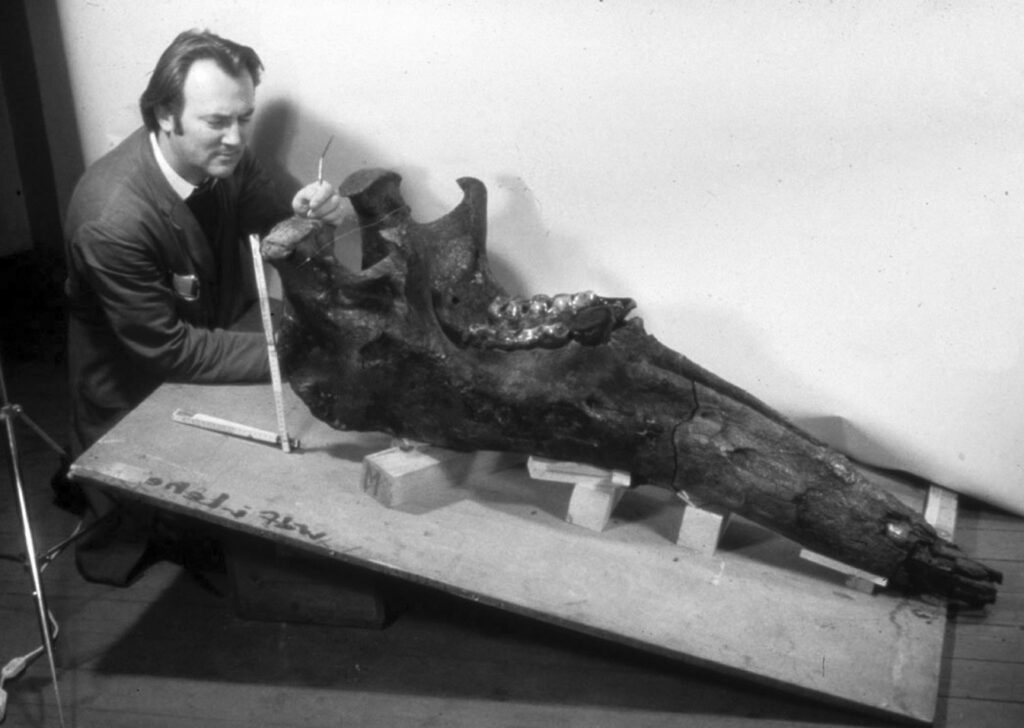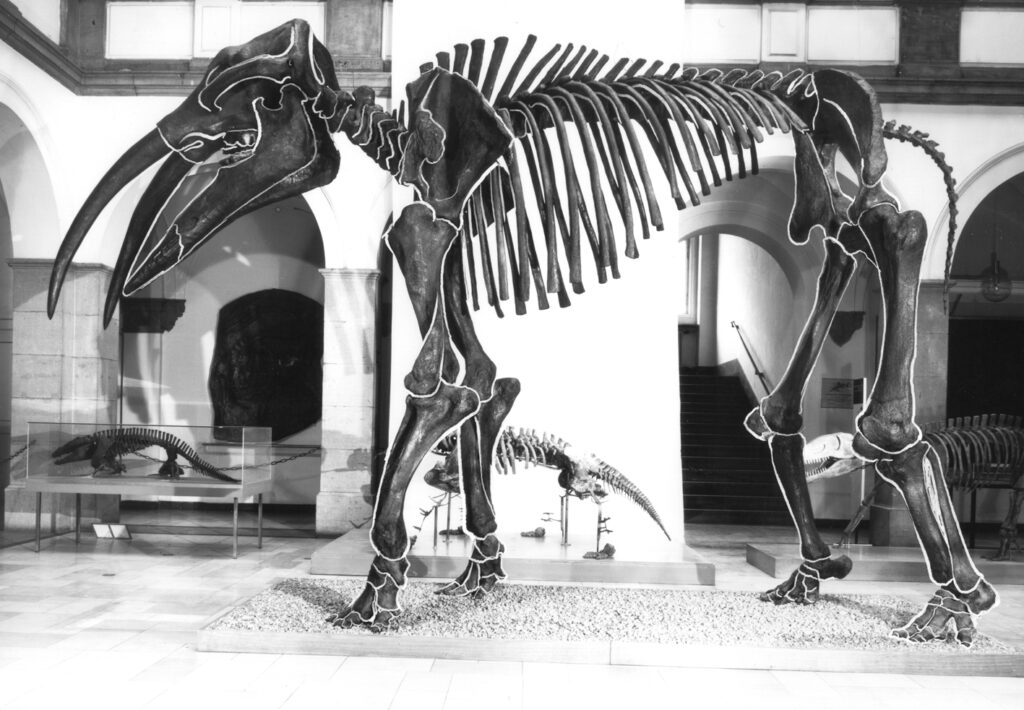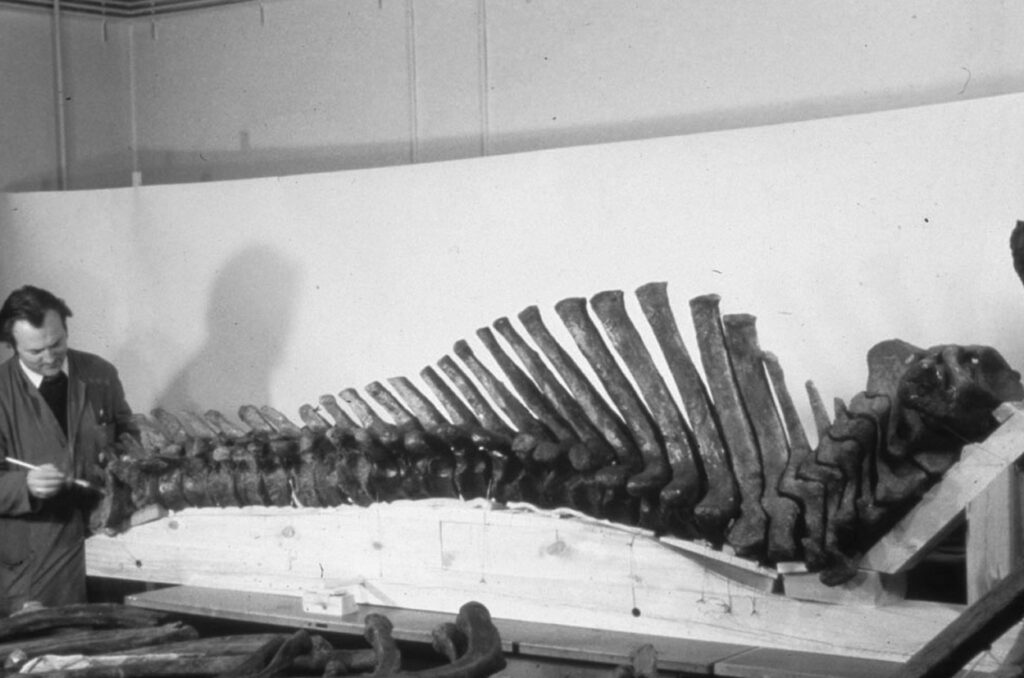History
The beginnings of today’s Bavarian State Collection for Palaeontology and Geology go back to the Natural History Collection of the “Churbaierische” Academy of Sciences, which was founded in 1759. Early significant additions were made to it thanks to the holdings of the Mannheim Natural History Cabinet and the collections of the University of Munich when it was relocated from Landshut to Munich. In 1843, the Palaeontological and Geological Collections became independent with the appointment of Johann Andreas Wagner and Karl Franz Emil von Schafhäutl as curators. Both of them also became professors at the University of Munich, an association that still exists today as the Munich Model. The palaeontological collection, then located at the ” Alte Akademie” on Neuhauserstraße, received the official name “Palaeontological Museum”.
Under Karl Alfred von Zittel, Munich paleontology gained international reputation at the end of the 19th century. The geological and palaeontological collections were united for the first time under his administration. After Zittel’s death in 1904, August Rothpletz took over as director. The chair of geology is owed to him, for the establishment of which he bequeathed a large sum of money to the university in his will. This was connected with a renewed separation of the collections united under Zittel.
During World War II, the Old Academy was destroyed by bombs in 1944. With it, a large part of the collection holdings and all the exhibits of the Palaeontological Museum were destroyed. Only a few of the important fossils had been removed by staff in time.
After the war ended, the Palaeontological and Geological Collections as well as the eponymous university institutes moved into the building at Richard-Wagner-Strasse 10, the former Royal Bavarian School of Arts and Crafts in Maxvorstadt. The collections soon regained their international reputation through extensive growth. Starting in the 1960s, the Palaeontological Museum was also able to present a respectable display collection again. This was later followed by the Geological Museum with exhibitions on mineralogy and the geology of Bavaria.
In 2000, the Bavarian State Collection for Palaeontology and Historical Geology and the State Geological Collection were merged to form the new State Collection for Palaeontology and Geology.
The history of the State Collection is associated with a number of renowned palaeontologists and geologists. In the pre-war period, these included Albert Oppel, Karl Emil von Schafhäutl, Karl Alfred von Zittel, Ernst Freiherr Stromer von Reichenbach, August Rothpletz , Erich Kaiser, Ferdinand Broili, Karl Boden and Edgar Dacqué. In the post-war period, the reconstruction and the attainment of international importance was due primarily to Richard Dehm and Albert Maucher and their successors and collaborators.






